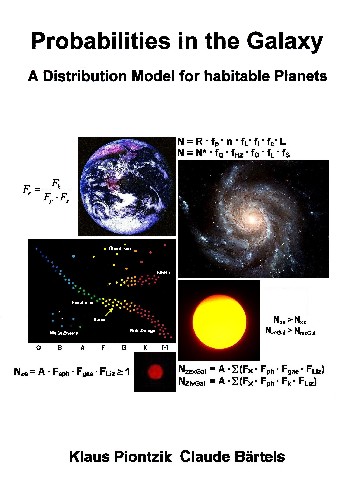| The planets found
so far, usually about the same size as the Earth, can
also be up to twice as large. In the rotation time as
well as the orbit time there are however considerable
deviations and the mass of the found planets is always
larger than that of the earth. Gravity there is so high
that no human being on earth could live there any longer.
Nevertheless, it cannot be ruled out that life in the
form of flora and fauna could also develop there. An "Earth 2" here means a planet whose size, rotation time and atmosphere are similar to Earth. Furthermore, it has oceans and continents and is so similar to the earth that people could live there. A real "Earth 2" has not yet been found. All considerations presented so far are based on the evaluation of empirical data from the Kepler telescope and catalogue data. They therefore represent the real situation. From the analysis of the catalogue data the following probabilities for the distributions of habitable planets result: |
| Symbol | Rate | Factor | Designation |
| Fhsub | 1:53 | 0.018,867 | Subearth |
| Fhsup | 2,043:3,286 | 0.621,728 | Superearth |
| Fg | 1,212:3,286 | 0.368,837 | approximately earth-great Planets |
| Fa | 51:130 | 0.392,307 | approximately earth-like Planets |

|
176 sides, of them 64 in Color 76 pictures 11 tables Production and publishing: Books on Demand GmbH, Norderstedt ISBN 9-783-7528-5524-1 Price: 22 Euro |
|